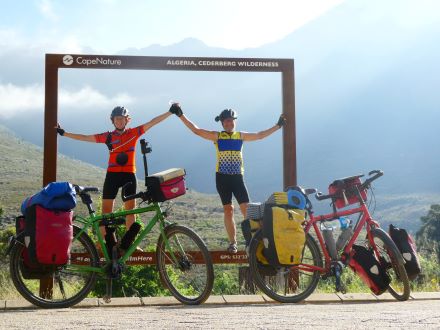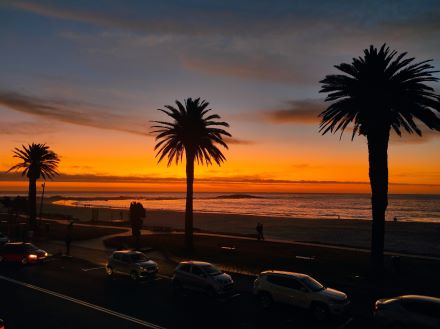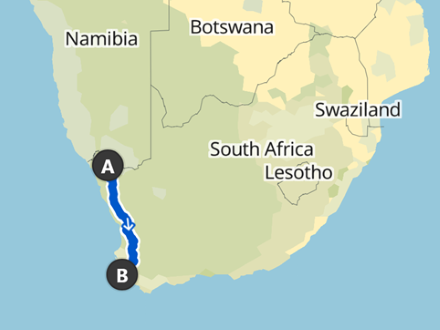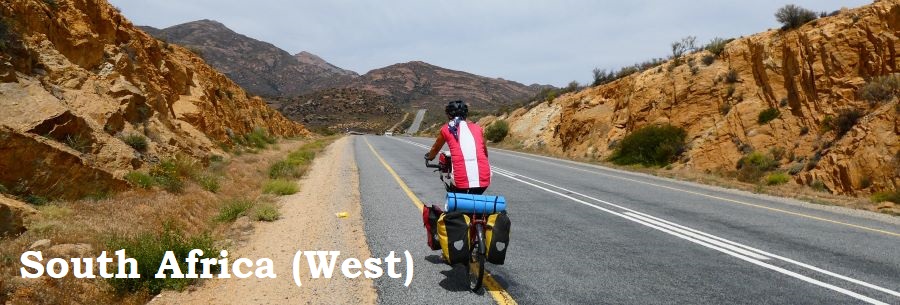
The spectacular scenery is something else, but what blew us away was the South African hospitality.
Vioolsdrif – Springbok – Clanwilliam – Algeria – Citrusdal – Porterville – Riebeek-Kasteel – Melkbosstrand – Cape Town – Cape Point – Cape Town
Oct 3rd – 28th, 2022
905 km cycled
Watch the video!
South Africa is often the starting/finishing point for touring cyclists in Africa with Cape Town an easy option for flights in and out. For us, it would mark the quarter-way point of our one-year trip. We had met a lot of South Africans while we were in Namibia and were well aware of their friendliness and hospitality. However, an underlying theme was always security when cycing in South Africa was mentioned, some even suggesting we leave the country out of our itinerary. We were willing to give it a chance and play it by ear.
When the temperatures hit 40 degrees Celsius on the Namibian/South African border, it was a great reason to head south to cooler temperatures. At Vioolsdrif, we joined the Cape Namibia Route, which extends from Windhoek (Namibia) to Cape Town, and followed the N7 southbound. What a delight! A perfectly paved road with a generous hard shoulder awaited. And when truck drivers blew their horns, it was a friendly hello rather than a hostile “Get off the road!” greeting.
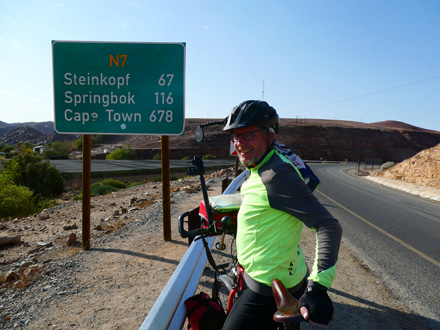
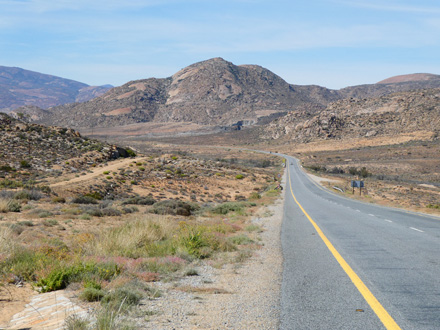

The beginning of October is just the tailend of the flower season in the Northern Cape Province and even that was a pleasant indication of how amazing August and September must be. The terrain is hilly and the further south you go, the desolate scenery gives way to more fertile ground with cattle grazing, citrus plantations and extensive cereal fields.
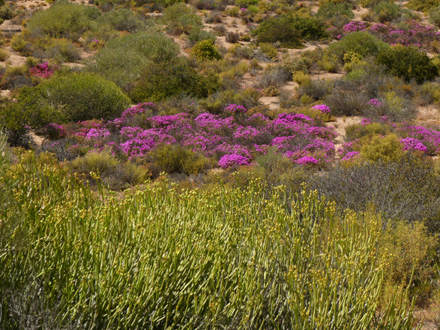

There were loads of little tortoises, rock dassies and colourful caterpillars en route and distances between villages were never more than about 70km. Passersby often stopped to offer water, supplies or accommodation, and we couldn’t have had a warmer welcome to South Africa. The N7 was a real unexpected treat!
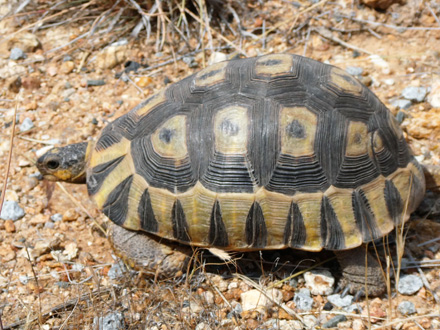
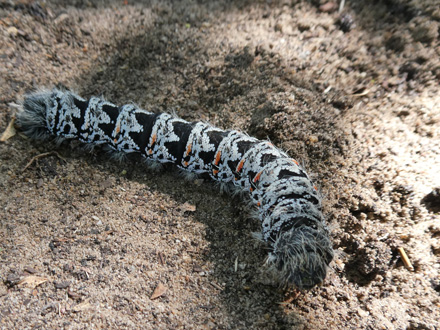
One good reason to leave the N7 is the beautiful Cederberg Mountain region where scenic trails leading to clear rock pools and beautiful waterfalls make parking the bikes a must … and the bums get a well-deserved rest.

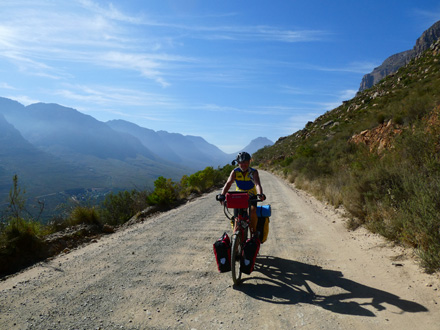
The hikes are well marked and very accessible from the numerous campgrounds in the area.
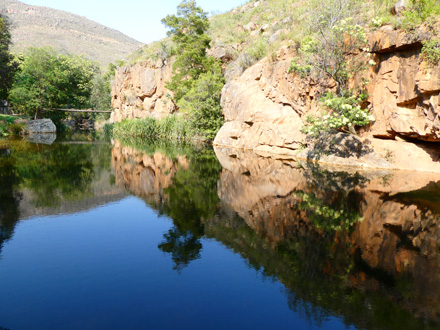
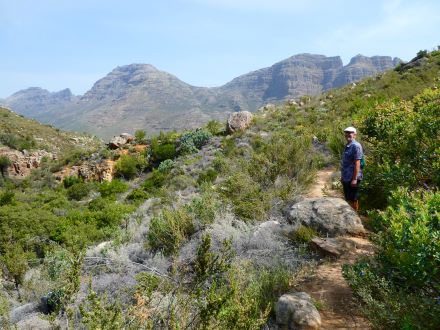
October is a great time to be there, as the sweet scent of orange blossoms permeates the air, and rooibos tea and mangos are also in bloom.
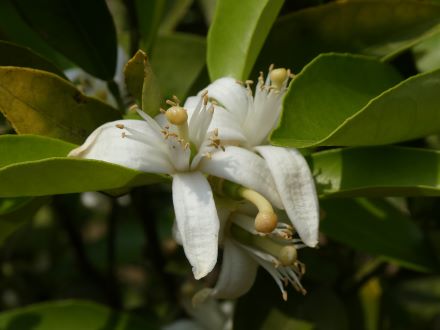
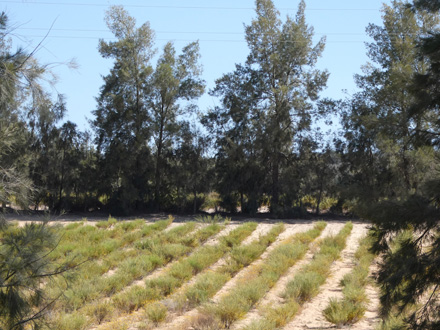
Another good reason to leave the N7 is the Swartland, where sprawling grain fields give way to rolling hills of olive groves and vineyards, internationally renowned for their high quality and diverse wines.
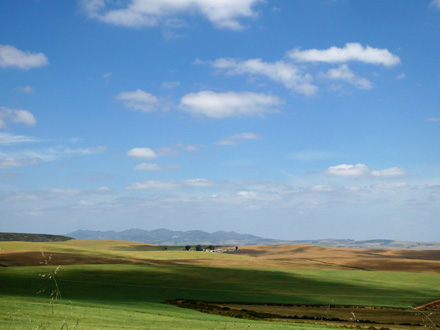

It’s incidentally also a great area to spot the blue crane: South Africa’s national bird. What a beautiful area for cycling! How we ended coming to this wonderful part of Africa was an invitation from Dave, a birder we met in Namibia.Well, we were wined and dined by his lovely family and experienced true South African hospitality first hand. Cheers to you all!
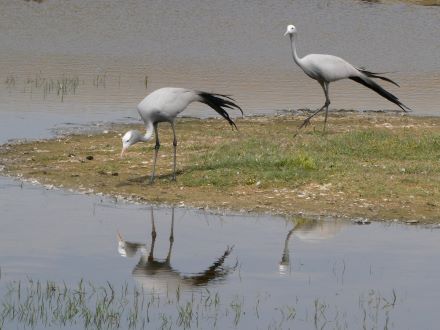
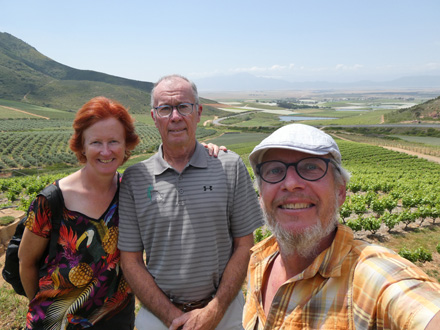
We especially enjoyed the town of Riebeek-Kasteel with its colonial flair, numerous art galleries, unique shops and exceptionally friendly locals. It’s hard to improve on the Swartland brand description: “The Swartland Wine & Olive Route is more than just a map; it is a laid-back state of mind that will reset your compass. No shoes required”.
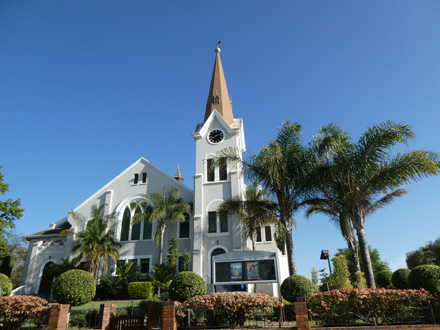
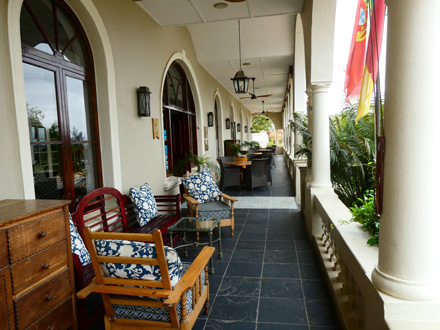
Following local advice, we crossed over to the Atlantic Ocean from there to enter Cape Town on the dedicated coastal bicycle route. In Melkbosstrand, we had our first sighting of Table Mountain, which was very exciting altogether!

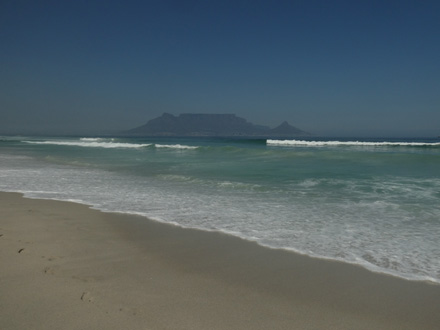
As we were cycling through the Woodstock area of the official cycle lane into Cape Town, we were approached by the police who insisted on giving us a police escort into the centre of town. Now, at the time we didn’t think it was necessary, but since then two of our cycling friends have been attacked at knife point and relieved of their valuables exactly in that area. The police are even considering closing the bike lane because of the many muggings reported there. The best option for cyclists would probably be to stay on the main road or take an Uber taxi in/out of town.

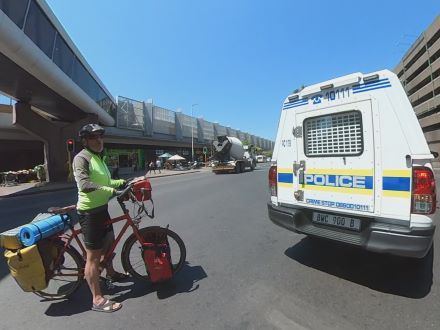
Since Luanda in Angola, Cape Town was the first big city on the trip. In our week there, we experienced no less than three unsuccessful pickpocketing attempts and we soon discovered that the only way to be out after dark was to use the Uber taxi service. Security aside, Cape Town has a most beautiful coastal setting framed by Table Mountain and the various neighbourhoods each have their own atmosphere. The Victoria and Alfred Waterfront was a great starting point.

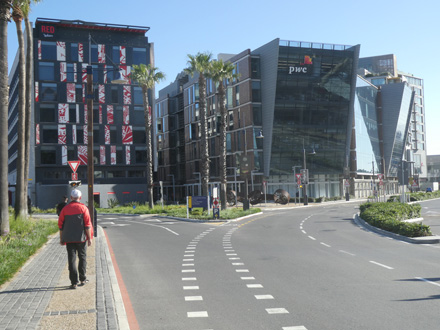
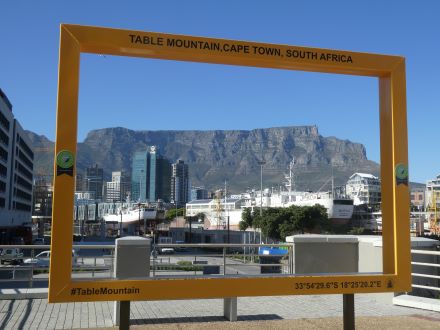
Needless to say, climbing Table Mountain was on our bucket list. We approached it from Camps Bay, which afforded fabulous coastal views the whole way up. Don’t be fooled. The top of Table Mountain is not a tabletop! There are deep ravines and to cross it is even more taxing that the climb itself!
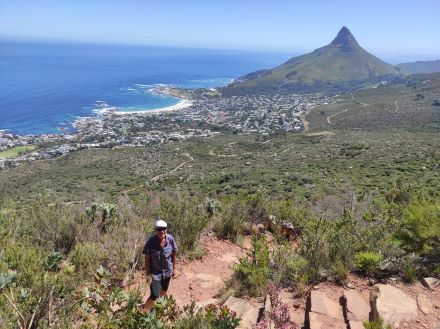

In the seventeenth Century, Cape Town was an ideal rest and supply station for boats travelling from Europe to India as part of the Dutch United East India Company. Hence, the Dutch colonised the area naming it the Cape Colony. Many skilled workers from their colonies (Sri Lanka, Indonesia, Malasia, India) were sent to Cape Town as slaves and when they were finally freed they settled in the Bo-Kapp neighbourhood, painting their houses cheerfully to celebrate this new status. They are often referred to as the Cape Malays.
Actually, the day we rolled into Cape Town, the Cape Town Mayor was in the neighbourhood unveiling the city’s first rainbow pedestrian crossing, the worldwide symbol for the LGBTQIA+ community.
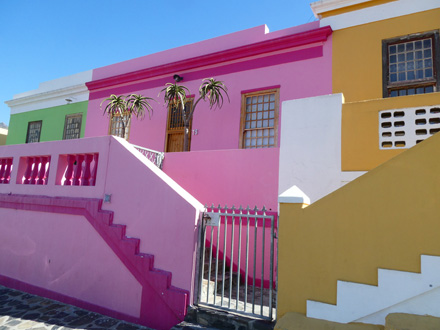
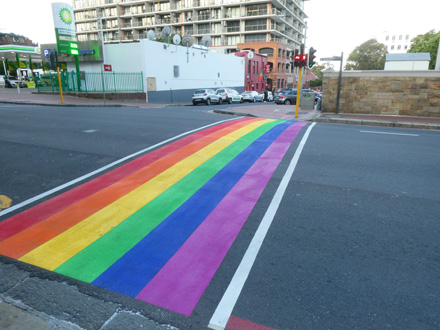
Robben Island was used as a prison for political prisoners as far back as the seventeenth Century. Firstly, by the Dutch with prisoners from their colonies and then right up until the end of Aparteid in 1996. In between, it was a leper colony and an animal quarantine station. This is where Nelson Mandela spent 18 of his 27 years imprisoned, and former RSA president Jacob Zuma also served time there. The tour was sobering, not least because of the claustrophobic herding of tourists in buses around probably the most visited site in Cape Town.
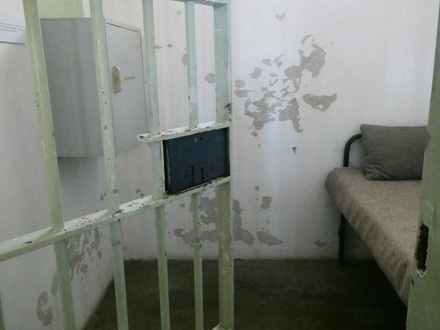
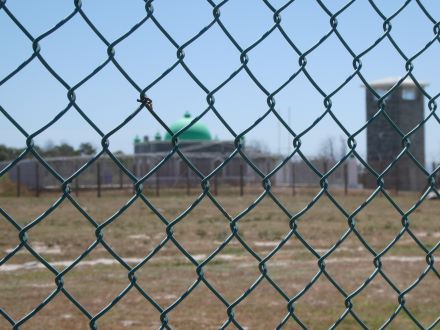
Aparteid is a recurring theme in Cape Town and another tearjerking museum is the District Six Museum. This inner city district was home to a vibrant multicultural community of immigrants, freed slaves, merchants and labourers of all creeds and nationalities living in harmony. Of course, this was not in accordance with the racial segregration that Aparteid stood for from 1948 to 1994. Hence, in 1966, it was designated a “white area” under the Group Areas Act of 1950. About 60,000 residents were forcibly resettled in the Cape Flats township some 25km away and their houses in District Six were demolished. Elderly residents, who have since had the opportunity to return and live in the neighbourhood, are the museum tour guides, and they give emotional first-hand accounts of their experiences before and after resettlement.
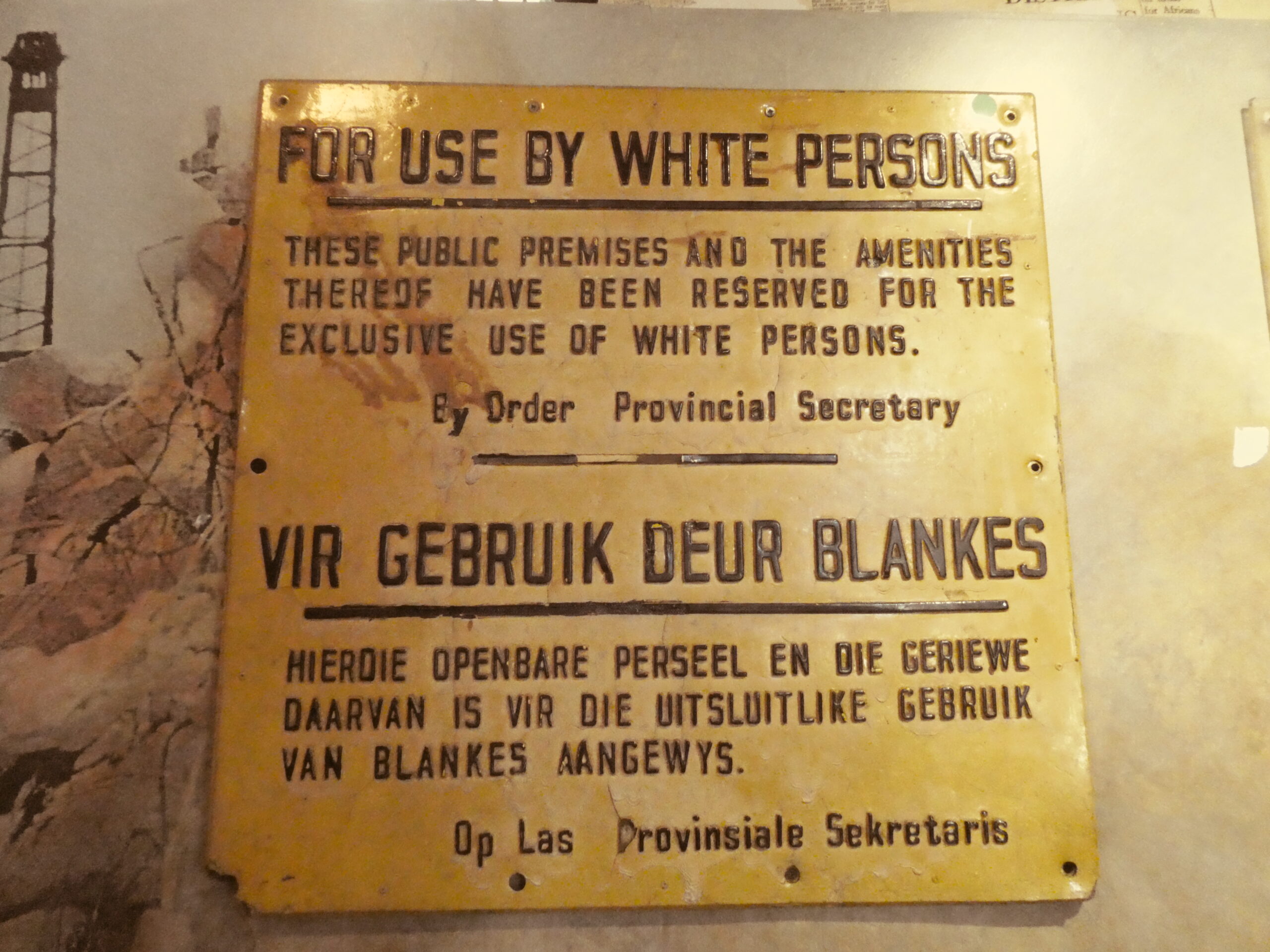
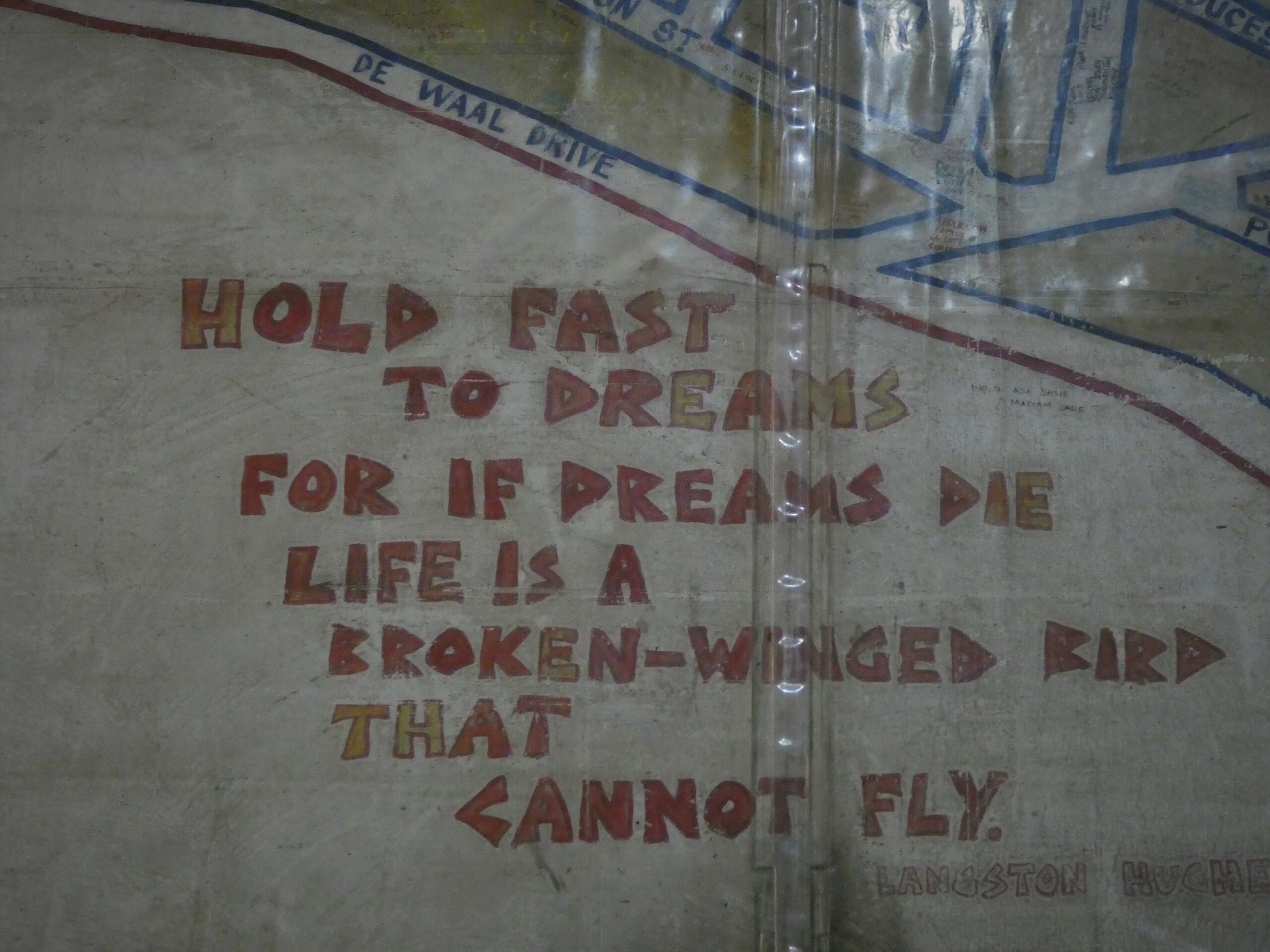
Wining and dining in Cape Town is a multicultural affair and we enjoyed everything from masala dosas and noodle soups in the Eastern Food Bazaar to fine dining in restored Victorian residences and at the beach. Main courses ranged in price from 50-300 Rand (3-18 Euros) depending on location.
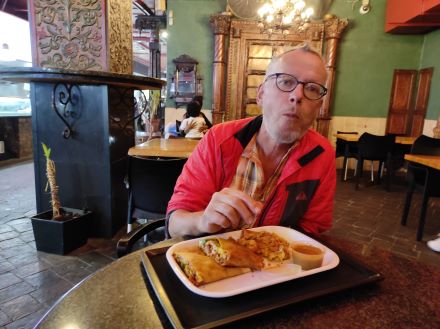
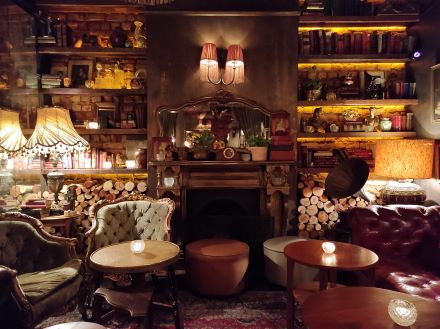
We had the wonderful opportunity to hike with a bunch of friendly, energetic locals thanks to one of our mountain-biking friends from Namibia days. The hike in the Jonkershoek Nature Reserve, Stellenbosh reminded us a whole lot of the Voralpen area of Switzerland! Thanks to Tracy for hooking us up with her daughter Lauren and to Lauren, Dylan and co. for this wonderful day.
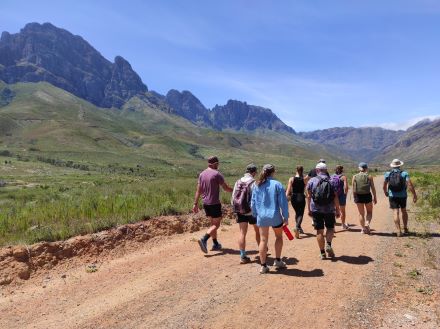
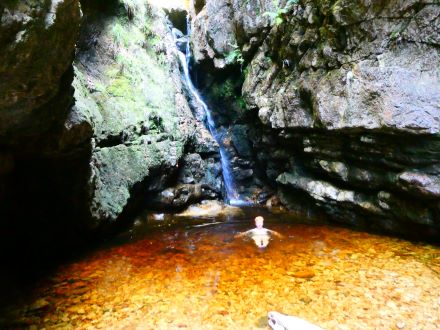
In an attempt to avoid busy dual carriageways and less desirable neighbourhoods, we left the city on a hiking trail leading half way up Table Mountain. Thanks Komoot – this was definitely not your finest hour!
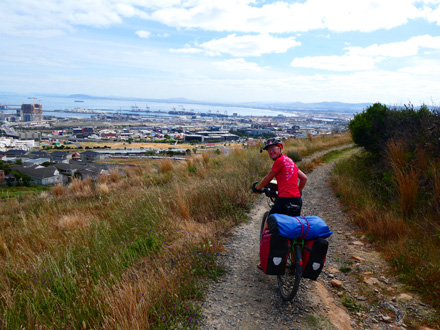
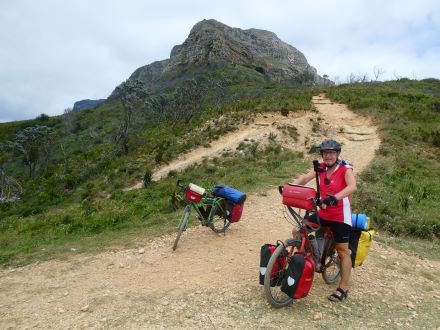
We emerged from the hiking trail short before the Kirstenbosch National Botanical Garden, ranked as one of the best in the world. The setting alone below Table Mountain makes it special and we spent most of our time admiring the numerous species of beautiful protea flowers.
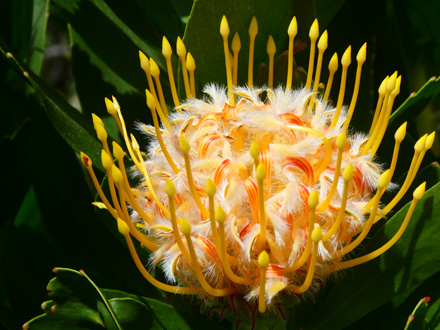



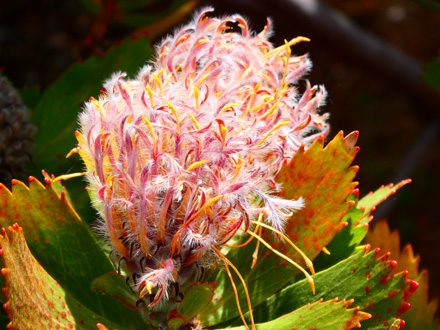
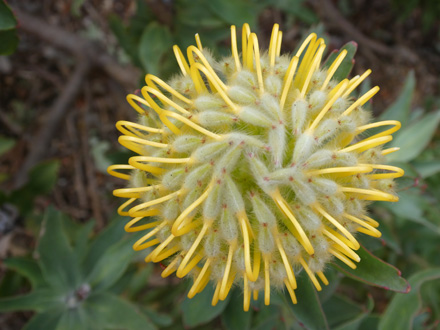
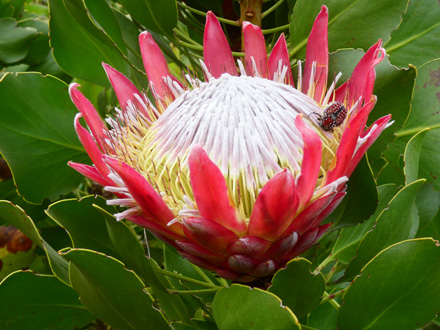
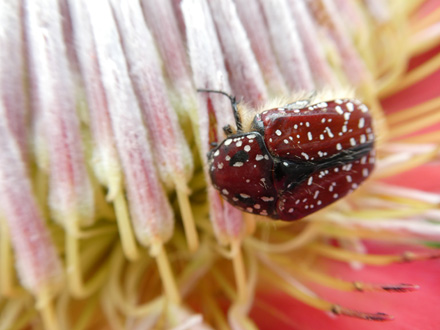
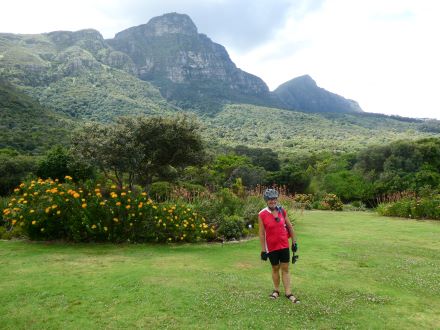
No trip to Cape Town is complete without a tour of the Deep South i.e. the Cape Peninsula and the Cape of Good Hope. Apart from its amazing coastal views, the area is special because of its “fynbos” shrubland, which is home to many varieties of protea.
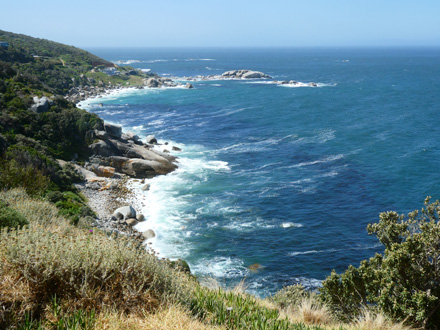
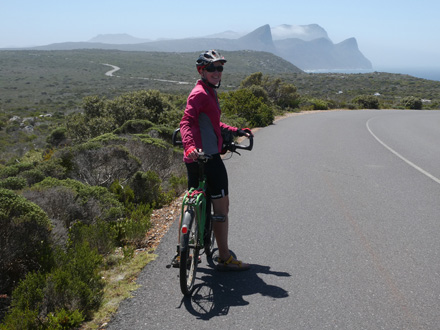
We were hosted here by Andrew, one of the off-road cyclists who rescued us in Namibia! He and his friend Peter brought us on a very informative and enjoyable spin down to the Cape of Good Hope and Cape Point. Cheers to you both for a fabulous few days in your neck of the woods.

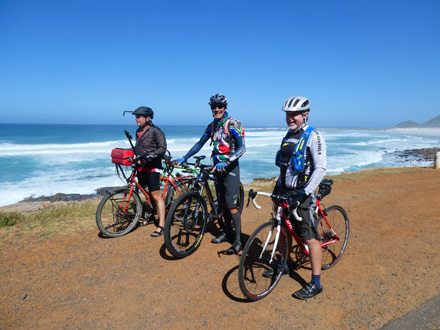

There is a great debate about where the Indian and Atlantic Oceans meet and some claim it is at Cape Point, south of Cape Town. Well, there was no visible line in the Ocean marking the meeting (or mixing) of the cold Benguela Current coming in from the Atlantic or the warm Agulhas Current of the Indian ocean. We will just have to check it out at the African Continent’s most southerly point at Cape Agulhas!
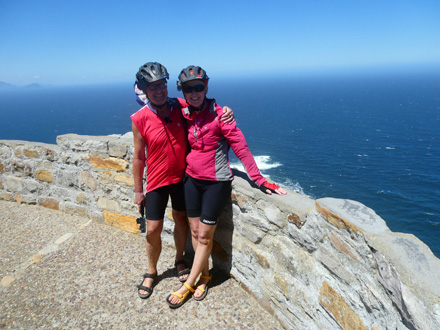
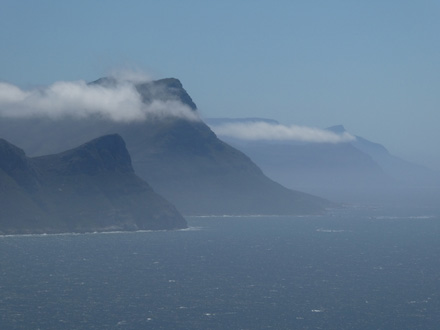
We were told to keep an eye out for penguins. Well, the road sign outside Simon’s Town was a real giveaway. At Boulder’s Beach, a colony of over 2,000 African Penguins nest and have been known to waddle across the street into the residential neighbourhood! They eat squid, sardines and anchovies but try to steer clear of killer whales, sharks and seals while in the water, and mongooses, cats and dogs while on land. Recently, 60 of the colony died of bee stings and another 19 were killed in a dog attack. They are listed as an endangered species.
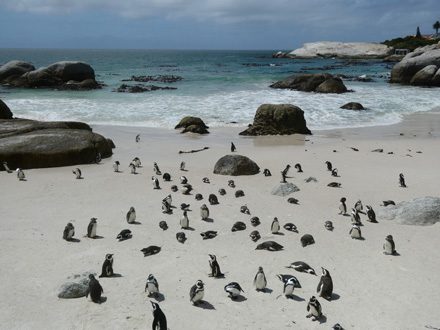
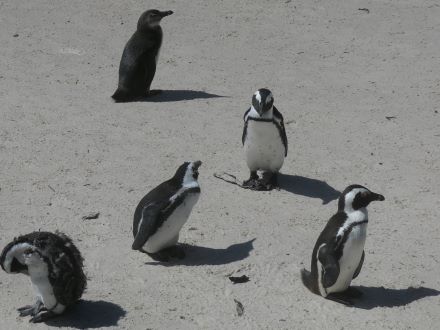
Chapman’s Peak Drive is one of those spectacular rides that has to be done. Carved into the cliff way back between 1915 and 1922, it stretches from Noordhoek to Hout Bay, a distance of 9km with 114 curves! There is no doubt about it, but Cape Town and the Cape Peninsula boast exceptional scenery and with a Mediterranean-type climate, the weather is pleasant year round. Ahhhh!
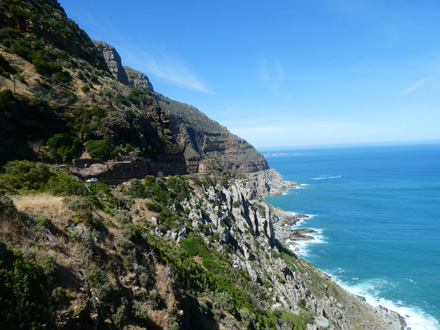
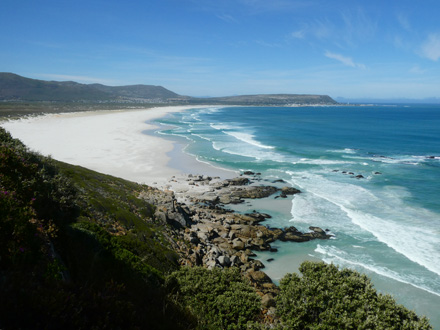
On this stretch, we stayed at official campgrounds or guesthouses. In both cases, the hospitality was second to none and the hosts often went out of their way to cook amazing dinners/breakfasts for us.

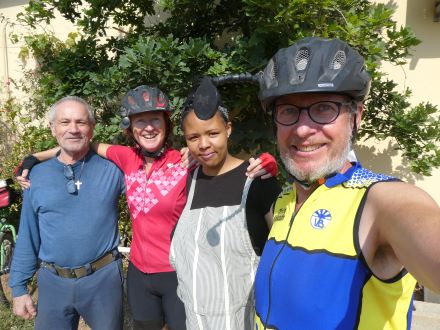
We bumped into two other touring cyclists on this stretch, both northbound: Josee from Canada and Felix from Germany.
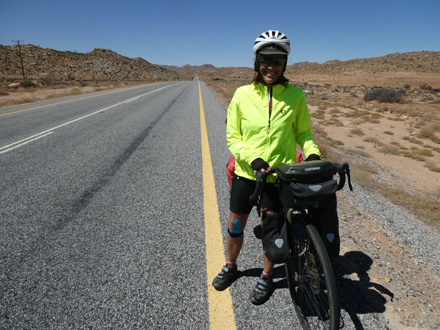

Apart from the security issues in Cape Town, our cycle from the Namibian border to the Cape was a very pleasant surprise. We were blown away by the South African’s friendliness and generosity, and the varying landscapes made our cycle down the West thoroughly enjoyable. What an introduction to South Africa!
